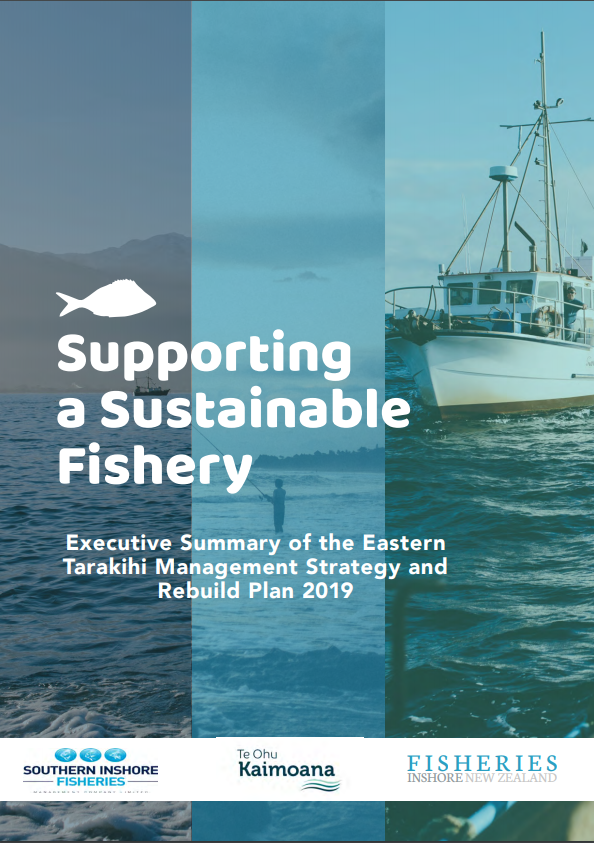Tarakihi Management Strategy and Rebuild Plan 2019
Tarakihi is an important fishery for all New Zealanders; it is a staple that supports local fishers and recreational interests. Tarakihi are harvested year-round throughout New Zealand and 90% of the fish is consumed by our domestic market. The fishery has a large depth range it is regularly caught when targeting other species. It is also caught by a variety of methods.
All of these factors make management complex. Consequently, a “one-size-fits-all” approach won’t work for all, and we are committed to providing and supporting a full suite of measures that reflect the complexity and importance of the fishery.
We have proposed a strategy that will ensure a healthy fishery for future generations. The goal of the Tarakihi Management Strategy is to rebuild and maintain the stock at or above the biomass that produces maximum sustainable yield. This will be achieved through engaged and active management throughout the entire rebuild timeframe and beyond.
Genesis of the Tarakihi Management Strategy
The first full stock assessment was conducted in 2017 and provided a new understanding of the East Coast tarakihi fishery (TAR 1E, 2, 3 and 7E). That assessment indicated that tarakihi fisheries on New Zealand’s east coast are a single biological stock.
The latest iteration of the assessment shows a long-term gradual decline in the fishery which has been below 20% since early 2000s and has never been above 27% of the unfished biomass since 1975. This is not where anyone wants it to be.
In 2018, the commercial fishing industry and Te Ohu Kaimoana agreed that immediate action needed to reduce fish mortality and rebuild the East Coast tarakihi stock, but in a manner that reflected the history of the fishery and the complex management and research approach required. As part of that broader management approach, we suggested significant reductions in the catch limits for east coast tarakihi that were implemented by the Minister in 2018.
Following the 2018 decision made by the Minister, the industry and Te Ohu Kaimoana were challenged to implement a management strategy that could assist the Minister in future decisions. Collectively we accepted that challenge and have actively been implementing and improving the management strategy since 1 October 2018. The measures implemented to date have included catch spreading and a key focus on selectivity measures that will hasten the rebuild of the stock.
Implementing and developing the TAR management strategy
The 2019 builds on that initial work and consists of two workstreams that are summarised below. Fisheries Inshore continues to contract scientific work and undertake trials to underpin the management of tarakihi; this work has been voluntarily funded by quota owners.
- Management measures (Workstream 1) – selectivity measures, catch reduction and catch spreading, reporting sub-minimum size catches, development and use of management procedures, implementation at a regional scale, using section 77 of the Fisheries Act; and
- Enhancing science (workstream 2) – improving understanding of fisheries data, management strategy evaluation, catch sampling, fisheries independent surveys, a gear database, electronic monitoring, genetics study, fish behaviour, assessing impacts of changing environmental conditions, collection catch data from charter vessels.
To learn more about the steps that industry and Te Ohu Kaimoana are taking to rebuild the East Coast tarakihi fishery see the Executive Summary and Eastern Tarakihi Management Strategy and Rebuild Plan 2019 here.
See our 2018 submission to MPI and original 2017 Tarakihi Management Strategy here.


